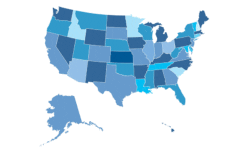Don’t Allow Guns on Campus
Here are seven reasons why they are a bad idea.
4. Impulse Control: Handguns plus rash behavior equals tragedy. Many factors can influence a person’s ability to handle instant access to deadly force. Factors that degrade emotional control can become lethal when handguns are added to the mix. Carrying a weapon into a bar is a bad idea since alcohol degrades impulse control. The zeal and passion of younger students can compromise impulse control. Emotionally charged political events can lead to irrational acts of violence. Anger and hatred displace reason. All of these circumstances can escalate into a catastrophic event when guns and deadly force are immediately available. Guns allow hate to be immediately gratified, where additional time will generally allow the threat potential to cool off.
5. Mission Conflict: Tension created by arms on campus can threaten a learning environment. The mission of higher education demands a safe and secure environment for faculty, students and the learning process. A campus with handguns can introduce a not-so-subtle intimidation factor. Think of a professor looking out on three low performing students, each with the conspicuous bulge of an automatic handgun showing beneath their shirts. Think of an angry political science professor with a magnum revolver strapped to his or her hip. What about a protest march with angry armed participants? Intimidation can erode the feeling of safety and security to the detriment of the mission to educate.
6. Threat Probability: The odds that a shooting will occur on an unarmed campus is low. Bringing handguns onto a campus is a drastic and potentially dangerous solution for a problem that is not likely to occur.
Related Article: 11 Steps to Improve Workplace Violence Prevention Policies
Whenever a campus shooting does occur, it is front page news precisely because these events are rare. Students have a much greater chance of injury or death from driving to school, walking across a busy campus street, drinking too much alcohol, or slipping and falling in their dorm room.
7. Alternative Countermeasures: The fact that campus shootings are rare does not mean that they should be ignored, but selected countermeasures should be low risk and consistent with educational objectives. They should enhance the feeling of safety for everyone on campus. Productive countermeasures should be carefully planned and developed to include the following:
- Provide education for faculty, staff and students on how to detect, prevent and survive a campus shooting.
- Develop and communicate multiple paths for reporting potential problems or threats, including Internet and anonymous tip lines.
- Have key staff members immediately available to analyze and coordinate an appropriate response to reported threats.
- Build crime prevention into the environment using Crime Prevention Through Environmental Design (CEPTED). This process discourages crime while increasing the feeling of campus safety.
- Develop mass communication systems to rapidly communicate potential threats to key faculty and staff members.
- Improve campus lockdown capabilities through technology and procedures to rapidly deny access to individual buildings and classrooms.
- Provide specialized training that involves faculty, staff, campus police or security and local law enforcement in coordinating a rapid response to events that involve an ac
tive shooter.
There are many other remedies to the threat of active campus shootings. All potential remedies should be judged by their ability to deter or mitigate the risk of an active shooter without adding additional risk to an already complex situation.
If you appreciated this article and want to receive more valuable industry content like this, click here to sign up for our FREE digital newsletters!
 Leading in Turbulent Times: Effective Campus Public Safety Leadership for the 21st Century
Leading in Turbulent Times: Effective Campus Public Safety Leadership for the 21st Century
This new webcast will discuss how campus public safety leaders can effectively incorporate Clery Act, Title IX, customer service, “helicopter” parents, emergency notification, town-gown relationships, brand management, Greek Life, student recruitment, faculty, and more into their roles and develop the necessary skills to successfully lead their departments. Register today to attend this free webcast!







